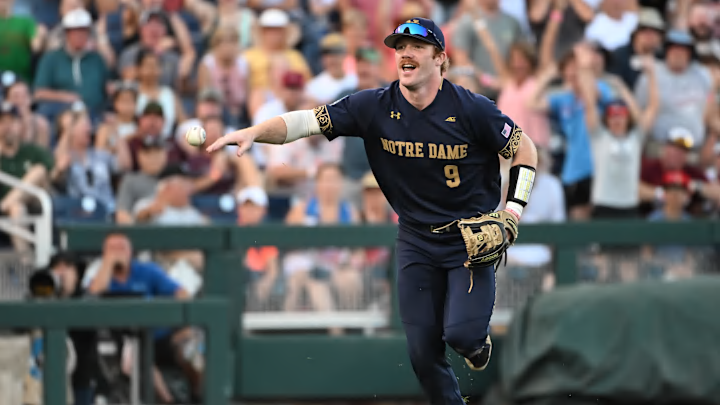Jack Brannigan
Jack Brannigan was part of the Pirates’ 2022 draft class. Picked out of Notre Dame in the third round of the draft, Brannigan was taken as a two-way player, one who had big power potential but also a blazing, upper-90s four-seam fastball. The Pirates likely aren’t planning on using Brannigan on the mound regularly, though his position on the infield could vary because of how talented of a defender he is.
In Brannigan’s first professional season, he was one of the Pirates’ best minor league hitters. Through 374 plate appearances between Bradenton and Greensboro, Brannigan batted .275/.390/.524 with a .415 wOBA and 145 wRC+. Brannigan showed off his big power potential, mashing 19 home runs while having an ISO just below .250 at .246. Brannigan was also a threat on the base paths, going 24-27 in stolen base attempts. He was an extremely patient batter, drawing walks in 14.2% of his plate appearances. However, this doesn’t come without any concern. Brannigan also struck out nearly 30% of the time (29.9% to be exact).
Brannigan was on fire from the start of July through the end of the season. His final 205 plate appearances yielded an astounding 1.007 OPS, .439 wOBA, and 165 wRC+. His isolated slugging percentage was approaching .300 at .297. He struck out in 30.7% of his plate appearances, but he also had a 12.2% walk rate and was on pace for nearly 40 home runs in 600 plate appearances.
Brannigan’s primary position is third base, but he’s shown to be a great defender at the position. Both MLB Pipeline and FanGraphs praise his defensive chops at the hot corner, with the ladder being more bullish. With an arm that was able to fire upper-90s heaters in college, his throwing ability is pushing into elite territory. Brannigan has also displayed average speed.
So far, most of the guys we’ve looked at might end up at a different position because they might outgrow their primary spot right now, might be filled by the time they reach the big leagues, or simply don’t have the defensive chops to remain at a premium position in the long run, and will have to move down to a less demanding position. This is a rare case where a player might move up the defensive spectrum.
Brannigan has already played a handful of games at both second base and shortstop. He actually played more shortstop than third base during his time at Greensboro. He only played 87 games in total (including 39 at High-A), but the Pirates seem to be confident in Brannigan’s ability to handle short. Now that Brannigan is focusing solely on playing the field, maybe next season could be his chance to really hone his skills at shortstop, and play the position full-time, possibly at Altoona.
